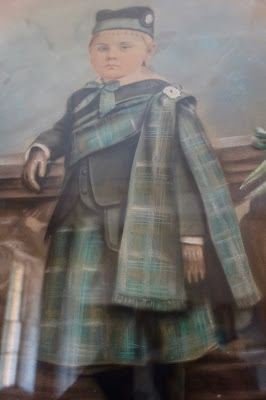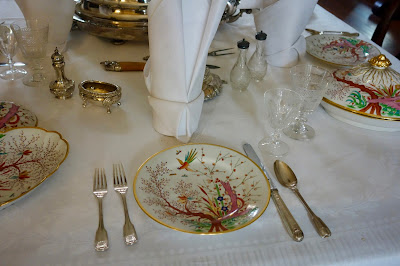I asked the personable docent where we might tour a local house that still includes slave quarters. Without flinching, he recommended the Aiken-Rhett House, an "urban plantation" that hasn't been restored. Or "whitewashed," depending on your perspective.
Several family portraits hang inside. Nobody bothered to paint the slaves.
The excellent audioguide sent us to back of the plantation first, where the slave quarters were located. The curators probably wanted to dispense with the unpleasant reminders of the Confederacy's past first.
The slaves were housed directly across from the garage and the stables, in similarly spartan conditions.
Compare the slaves' dining room
. . . to the one where the owners ate:
The slave quarters lacked an indoor toilet. The owners bathed here:
Their hearths differed, too. Guess whose was whose.
Slaves were expected to be productive at all times
. . . while their owners enjoyed leisure. However, despite their comfort and easy access to religion, literature, music and art, the owners never questioned the morality of human chattel.
The Aiken-Rhett House offered less charged lessons, too. Lighting the place must have been a pain in the ass before the advent of electricity.
Early electrical wiring was primitive, to say the least.
Despite the decay and indefensible past, beauty remained.











































No comments:
Post a Comment